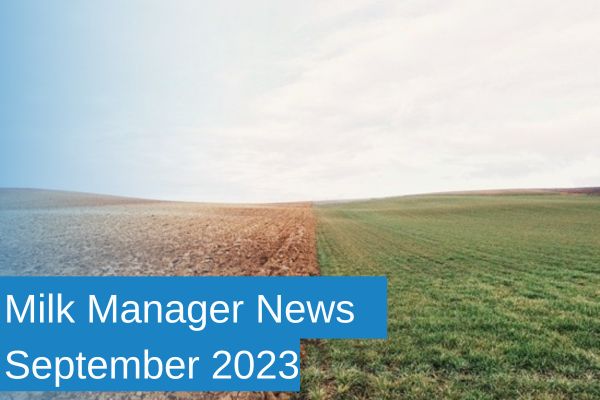MMN September 2023 – Soil Health: Dairying from the Ground Up
11 September 2023Soil is the platform that underpins everything that you as dairy farmers do. However, soil health has frequently been a neglected key performance indicator (KPI). There are three pillars to soil health: biological, chemical, and physical.
As farmers, we often have fields or areas of fields that yield less than other areas of the farm. The answer as to why will be in one or more of the three pillars of soil health, as shown below:
Figure 1 Common Principles to Improve Soil Health

Biological
Soil organic matter (OM) is the living or once living part of the soil. It is critical as a food source for the millions of microorganisms and larger more well-known organisms, such as worms, that keep our soil working. These organisms break down applied fertiliser and manures, converting the nutrients into a form which is accessible to the plant. Therefore, measuring the amount of these organisms is an important KPI to assess the health of your soil.
Laboratory tests to look at the variety and quantity of species in the soil are available. However, these are costly and need expert input to interpret. However, measures of organic matter which is standard in most commercially available soil analysis is a good indicator.
In addition, counting worms is also a useful indicator, particularly when counts are repeated each year and can start to show a trend in soil health. Healthy soils should contain over nine worms in a 20cm x 20cm x 20cm cube of soil.
Physical
Research by SRUC has found that compaction can reduce yields by up to 19% from livestock trampling and 37.7% for tractor-related compaction. Compacted soil reduces microbiological processes leading to lower uptake of nitrogen, as well as drainage issues.
Completing a visual examination of soil structure (VESS) will allow you to assess the physical status of your soil. To do this, use a spade to dig soil pits (20cm x 20cm x 20cm), then manually break down a sample of soil by hand, to visually assess the structure of the soil particles, rooting depth and colour/smell. A well-structured soil has round crumbly particles that can be easily broken up between your fingers, allowing plant roots to penetrate down through the soil. It should smell earthy or have little odour; a pungent smell indicates poor drainage or lack of oxygen in the soil. Grant funding could be used to have a specialist advisor complete VESS assessments on your soil.
Chemical
It is important to know the soil’s chemical composition to optimise inputs. Soils naturally vary in their chemical composition as does their optimum pH. Soil pH is a measure of acidity and alkalinity and is a starting point for any expenditure, since without the optimum pH any other nutrient applied to the soil is not fully utilised. At a pH of 5.0 to 5.5 it is estimated that 32% (and at pH 5.5-6.0 approximately 21%) of nutrients applied are not available for uptake by the crop.
Once pH’s have been corrected the next focus should be on correcting phosphorus (P) and potassium (K) levels. Once pH, P & K levels are within the optimum range you still need to ensure that they stay within the optimum range by replacing the nutrient taken off through grazing or offtake with harvested crop. However, in grazing scenarios, around 95% of P & K is recycled through the animal.
In silage and other crops, P & K are removed from the field at harvest. It is important that fertiliser or manure applications match the offtake. Below is an example of the offtake from multi-cut silage.
Phosphate and potash offtakes from silage
| Silage cut | Phosphate removed |
| 1st | 39kg/ha (31 units/acre) |
| 2nd | 20kg/ha (16 units/acre) |
| Silage cut | Potash removed |
| 1st | 138kg/ha (110 units/acre) |
| 2nd | 72kg/ha (57 units/acre) |
Source: SAC Technical Note TN:652
To discover the soil’s chemical properties, laboratory tests are available. The Preparing for Sustainable Farming (PSF) grant fund is available to pay for soil sampling, so now is a good time to start assessing your soil nutrition status.
Links for further information:
Preparing for Sustainable Farming (PSF) (ruralpayments.org)
Specialist Advice | Helping farmers in Scotland | Farm Advisory Service (fas.scot)
Soils resources for farmers from Farm Advisory Service (fas.scot)
james.orr@sac.co.uk; 01252 525010
Sign up to the FAS newsletter
Receive updates on news, events and publications from Scotland’s Farm Advisory Service

